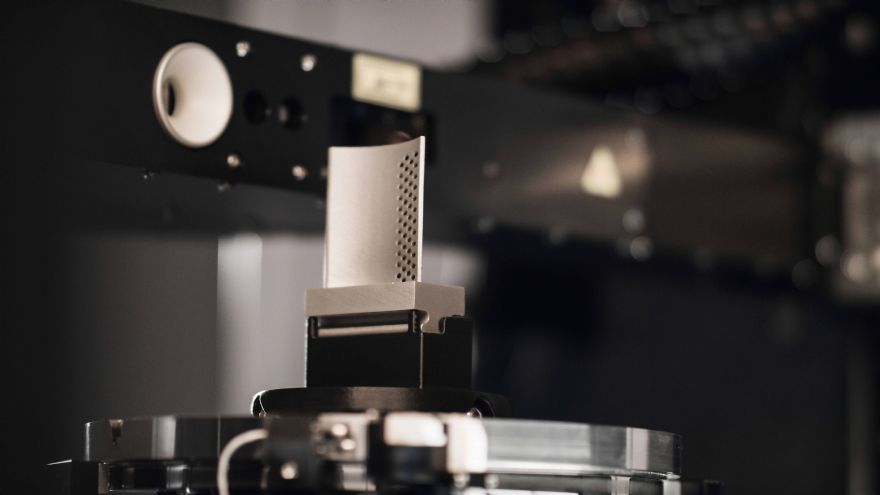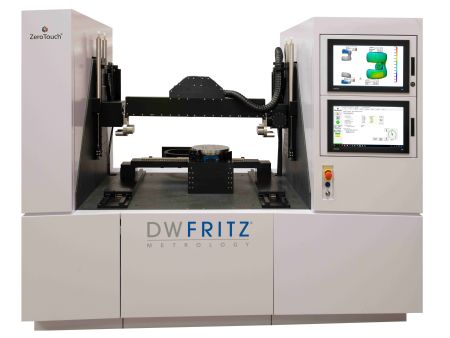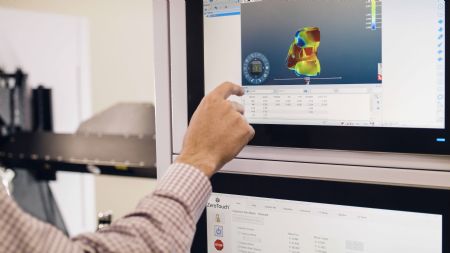
Most traditional contact-based inspection systems such as CMMs are characterised by long measurement cycle times; they are not suitable for generating the large number of data points required for complex surfaces — nor an ideal solution for 3-D inspection on the production line.
To address such limitations, DWFritz Automation (
www.dwfritz.com) — a leading provider of precision metrology, inspection and assembly solutions for advanced manufacturing (based in Oregon (USA) and employing over 500 people at locations in the USA, France and China) — has developed its ZeroTouch measuring platform.
This uses multiple non-contact sensor technologies to rapidly measure in three dimensions and in real time. Its proprietary software then creates a dense and highly accurate 3-D point cloud; by simplifying complicated programming procedures, ZeroTouch reduces the system configuration time to just a few hours, saving substantial production time and costs. Moreover, it offers 100% in-line inspection rather than just sampling.

David Mendez, vice-president of the ZeroTouch business unit at DWFritz Automation, said: “Quality control is critical in production operations. Preparations such as programming — along with the measuring process itself — often take a great amount of time and result in high costs.
“In addition, inspection tasks requested for manufacturing often collide with other measurement requests, such as those from other manufacturing lines, pre-production tests or even R&D.
“ZeroTouch features a five-axis architecture that captures millions of data points per second in a single scan to create a dense 3-D point cloud, allowing the rapid measurement of complex part geometries and precise inspection of the most complicated parts, with a high level of repeatability.”
The system uses a planar air bearing that is designed to minimise ‘tolerance stack error’, while at the same time providing extremely smooth high-speed motion for improved gage repeatability and reproducibility (GRR).
Acquisition of the data points is extremely rapid (up to 4 million points per sec), and the system combines various technologies such as laser and chromatic confocal sensors with high-resolution cameras (with multi-spectral illumination). Moreover, the user can choose the optimum sensing technologies to get the best measurement results.
For example, shiny or specular surfaces will require specific sensors such as white-light confocal or interferometric sensors, while laser profile sensors may be needed for surfaces with ‘matt-like’ finishes.

Mr Mendez said: “The sensors can be configured to the specific geometric dimensioning and tolerance (GD&T) measurements and to the part; in one scan, the system can capture data points to create a high-density 3-D model.
“This makes it possible to measure objects made of a wide variety of materials — and with complex geometries, including holes, under-cuts, bevels, and surfaces — quickly and precisely, together with a high level of reproducibility and repeatability.”
The various non-contact sensors on the machine’s bridge-type structure can be easily calibrated directly by software, with further time saved by the ease with which parts and assemblies can be placed on the measuring table.
Moreover, the three-dimensional point cloud can be analysed immediately after the measurement process, with integration to proven analysis tools enabling accurate comparison of the scan results with part CAD models (or a reference part previously scanned and measured) to not only check for geometric and dimensional tolerances but also other previously undetected issues, such as surface aspect defects.

Mr Mendez said: “Using statistical process control (SPC), faults or outside-tolerance deviations can be quickly detected, and appropriate reporting can be sent back to the manufacturing execution system.
“This could enable process parameters in upstream manufacturing processes to be adjusted to minimise rejects downstream.”
The current ZeroTouch system measures 2,400 x 1,500 x 1,900mm and weighs 3,550 kg. It can measure parts up to 300 x 300 x 300mm and weighing up to 10kg.
Its control/computing capability is based on a high-performance GPU PC with Intel Core i7-7700T processor and two capacitive industrial monitors with touch-screens.